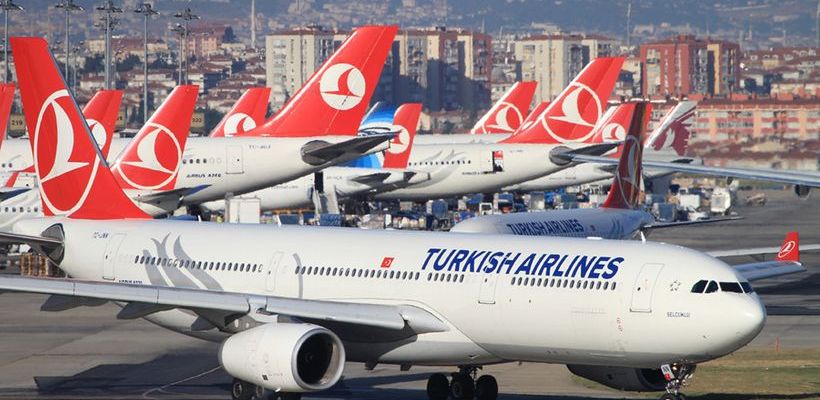The Worst Airports In The World In 2018!
Your flying experience doesn’t just depend on what airline you’re flying with, but also what airports you’re flying from.
AirHelp, a famous travel website which helps passengers to claim compensations, recently announced its ranking of 141 airports across the world.
The top airports on the list all earned praise for their friendly service, timeliness
The following 10 airports earned the lowest marks based on data assessing on-time performance, public reviews of
It’s fair to say that these airports have provided passengers plenty to complain about.
10. Eindhoven Airport

On Time Performance: 5.9
Service Quality:7.2
Passenger sentiment: 5.1
TOTAL: 6.39 (out of 10)
Eindhoven Airport in
If you go through the Facebook page of the Dutch airport you will find countless complaints about bad customer service, long security linesand general disarray.
Here’s an example of one of the thousand bad reviews on Facebook:
“After being dismissed by every staff member with the response of ‘That’s not my problem!’, it was nearly impossible for us to speak to someone in charge and when we finally got contact info they responded with a generic email just giving their condolences. Your condolences don’t give me back my money for the flight I missed because the airport security was such a train wreck.”
9. Bordeaux-Merignac Airport

On-time performance: 7.4
Quality of service: 5.6
Passenger sentiment: 5.1
TOTAL: 6.37
The Bordeaux-Merignac Airport is located seven miles outside the city center of Bordeaux in southwestern France.
While it received decent marks for on-time performance, the airport lost points for passenger sentiment and quality of service.
Complaints about this airport frequently target unclean restrooms, long security lines, rude staff members and an overall unwelcoming feeling.
8. Edinburgh Airport

On-time performance: 6.6
Quality of service: 7.0
Passenger sentiment: 1.8
TOTAL: 6.29
Even Though Edinburgh Airport tagline is “where Scotland meets the world,” some
According to AirHelp’s analysis, the airport received pretty awful marks for passenger sentiment, which dragged down its overall score.
People who have flown through Edinburgh say it’s difficult to navigate, mismanaged and chaotic.
Travelers also point out that the airport is severely lacking in seats to accommodate passengers as they wait, so many people end up sitting on the ground which is definitely not ideal.
7. Boryspil International Airport

On-time performance: 4.3
Quality of service: 8.0
Passenger sentiment: 4.9
TOTAL: 6.03
If you’re planning to visit Kiev, Ukraine, chances are you’ll be flying into the No. 7 worst airport in the world, Boryspil International Airport.
Another common complaint is the state of the toilets at the airport which have been described as “Dirty & Smelly”.
6.Manchester Airport

On-time performance: 6.1
Quality of service: 6.6
Passenger sentiment: 2.6
TOTAL: 5.95
People really like to complain about Manchester Airport on social media and that negative passenger sentiment is one of the main reasons the
Most recently, people have been grumbling about the fact that Manchester now charges a fee for passenger drop-offs, so even those who aren’t actually stepping foot inside the airport have something bad to say about it.
Other
5. Stockholm Bromma Airport

On-time performance: 4.4
Quality of service: 7.6
Passenger sentiment: 5.1
TOTAL: 5.91
Despite Sweden regularly being named one of the happiest countries in the world, the country’s Stockholm Bromma Airport, located a few miles west of the city center, has caused quite a lot of headaches for recent travellers.
Though it’s much closer to the center of Stockholm than Sweden’s largest airport, Arlanda,
The quality of service, however, has been rated higher because of the same reason, since a smaller airport also means quicker check-in and security procedures.
4. Paris Orly Airport

On-time performance: 5.3
Quality of service: 6.8
Passenger sentiment: 4.1
TOTAL: 5.83
If you aren’t flying into Paris’s main international airport, Charles de Gaulle, you’re likely flying into Orly Airport, south of the city center.
And chances are, this will lead to a not-so-pleasant experience!
In addition to the airport’s low marks from AirHelp, travelers don’t hold back on its Facebook page. Some of the most common complaints about Orly include that it’s crowded, not welcoming, disorganized and somewhat difficult to navigate.
3. Lyon-Saint-Exupery Airport
On-time performance: 6.1
Quality of service: 5.8
Passenger sentiment: 4.2
TOTAL: 5.78
Located on the eastern outskirts of Lyon, France, Travellers love the design and architecture of Lyon-Saint-Exupery, but that’s about where their compliments stop.
Travelers have complained about the lack of technology during the check-in process, long lines and unhelpful French staffers.
2.London Stansted Airport

On-time performance: 6.2
Quality of service: 5.8
Passenger sentiment: 1.1
TOTAL: 5.53
When you think of London Airports you typically picture Gatwick or Heathrow.
But don’t leave out London Stansted Airport, which is roughly 40 miles northeast of the city center.
The airport also happens to be the second worst in the world, according to AirHelp’s findings, due to an abysmal score for passenger sentiment (though surprisingly not as low as London Gatwick Airport) and mediocre marks elsewhere.
What do travellers have to say about Stansted?
Well, for starters, they complain that the lines for check-in and security are always incredibly long and that it takes forever to get your bags once you land.
1.Kuwait Airport

On-time performance: 4.1
Quality of service: 7.0
Passenger sentiment: 3.9
TOTAL: 5.40
Coming in at “No. 1” on the list of the worst airports in the world? Kuwait Airport.
Travelers flying through here noted that it was disorganized and not as clean as they would have
As one disgruntled passenger expressed: “This airport is a total disgrace.”




















